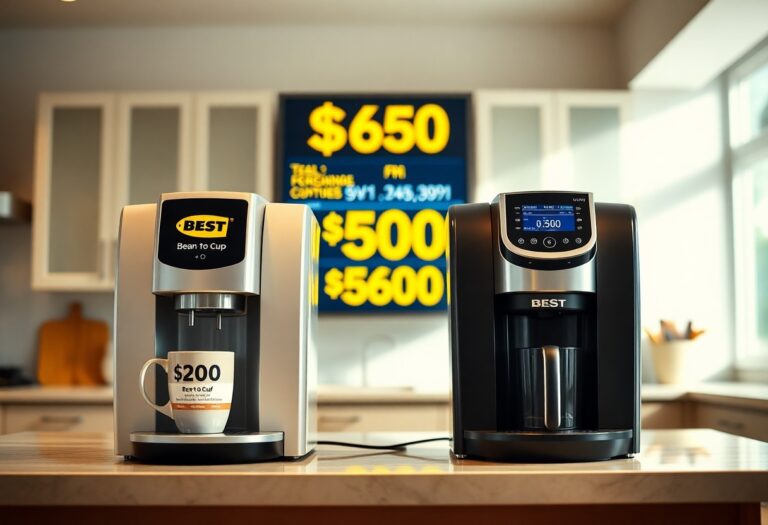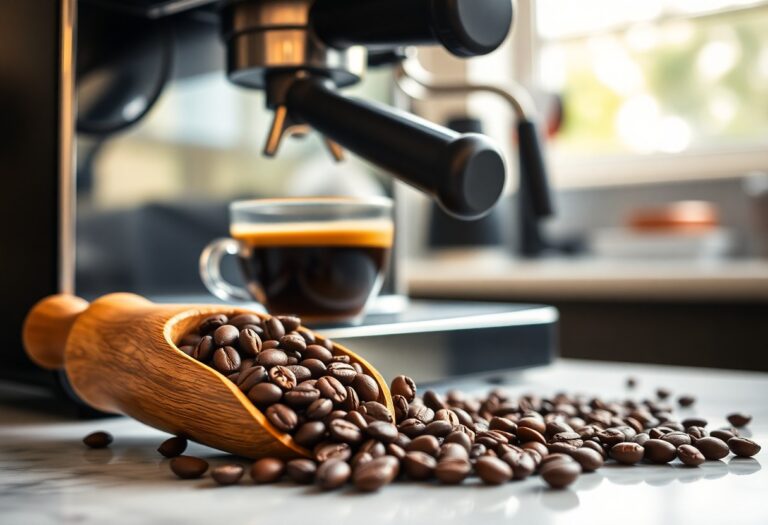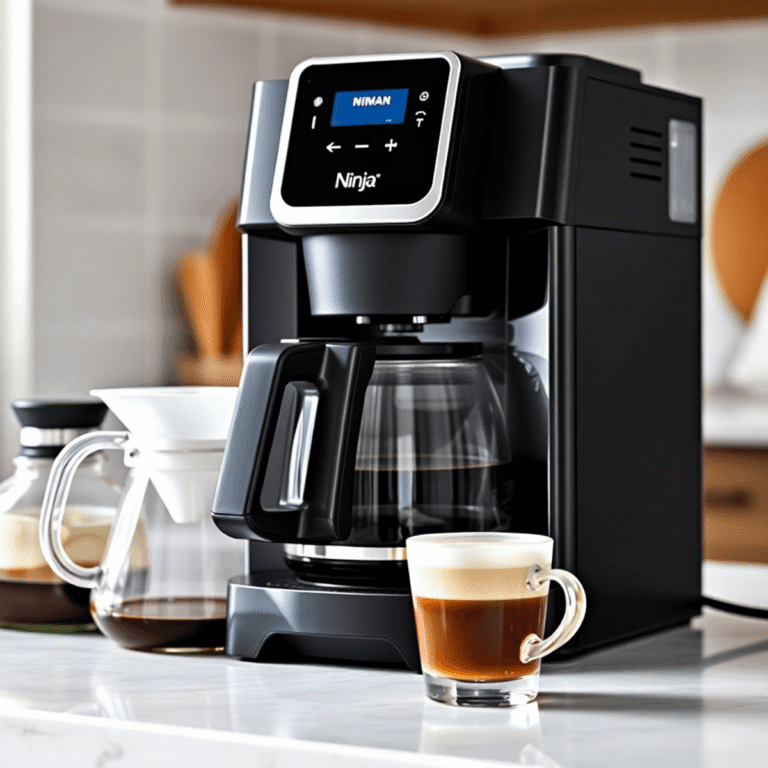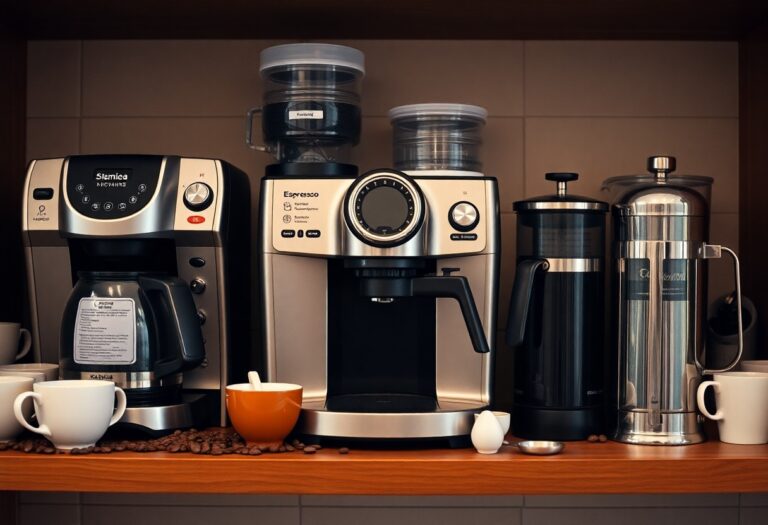What Pressure Should a Coffee Machine Be – Optimal Settings
Just knowing the optimal pressure for your coffee machine can significantly enhance your brewing experience. Most coffee machines operate best between 9 to 10 bars of pressure, ensuring a rich extraction of flavors. If your machine is below this range, you risk a weak, under-extracted cup, while too high can lead to bitterness. Adjusting your settings to maintain this balance not only improves the taste of your coffee but also prolongs the life of your machine. Let’s look into how you can achieve the perfect pressure for your daily brew.
Key Takeaways:
- The optimal pressure for most espresso machines is typically around 9 bars (130 psi), which allows for proper extraction of flavors and aromas from the coffee.
- Under-extraction occurs at lower pressures, resulting in sour and weak coffee, while over-extraction at higher pressures can lead to bitter and unpleasant flavors.
- Machines with adjustable pressure settings can enhance the brewing experience, allowing users to experiment with different flavors and consistencies.
- Pressure profiling, a technique used by advanced coffee enthusiasts, involves adjusting pressure during extraction to influence taste and texture.
- Consistent maintenance of the coffee machine, including regular calibration of pressure settings, ensures optimal performance and beverage quality.

The Essential Pressure Range for Brewing
To achieve the perfect espresso shot, you must operate within the ideal pressure range of 9 to 10 bars. This range provides the optimal balance of water flow and extraction, allowing for rich flavors and aromas to develop while minimizing bitterness. Operating below 8 bars can result in under-extraction, yielding watery shots, while pressures above 10 bars may lead to over-extraction, resulting in a harsh, unpleasant taste. Fine-tuning your machine to maintain this pressure ensures every cup delivers a delightful experience.
Exploring the Ideal 9 Bar Benchmark
Historically, the 9 bar benchmark has been embraced by espresso enthusiasts as the gold standard for brewing. At this pressure, water flows through the coffee grounds uniformly, extracting the right oils and essences. This standard has been backed by numerous studies and tests across various coffee machines, becoming a reference point for both home brewers and professional baristas alike. Achieving this consistent pressure can elevate your coffee game significantly.
How Different Beans Respond to Variations in Pressure
The flavor profile of your coffee can drastically change based on the type of beans used and the brewing pressure applied. Different beans have unique densities and oil contents, influencing how they behave under varying pressures. For example, a light roast may yield a brighter, more pronounced acidity at 9 bars but could taste flat at lower pressures or overpoweringly bitter at higher pressures.
When experimenting with various beans, you’ll notice that lighter roasts tend to be more sensitive to pressure variations compared to darker roasts. The more intricate flavors of light roasts often benefit from the sweet spot around 9 bars, as this pressure maximizes their inherent characteristics. In contrast, darker beans can usually tolerate slight pressure fluctuations without drastic changes to flavor, often maintaining a steady sweetness even if brewed at 10 or 11 bars. By understanding your beans’ properties, you can adjust your brewing pressure to align with their unique profiles, catering to specific taste preferences and elevating your coffee experience.
Deconstructing the Brewing Process: Pressure’s Role
Understanding the brewing process reveals that pressure is a pivotal factor in extracting the flavors from coffee grounds. As water passes through your coffee, pressure impacts the interaction between water and coffee, affecting how oils and compounds are released. A consistent pressure allows for an even extraction, ensuring that the full spectrum of flavors from your coffee beans is realized. When you maintain this delicate balance, you achieve a well-rounded and satisfying cup of coffee.
The Impact of Pressure on Extraction Rates
The extraction rate of coffee directly correlates with the pressure applied during brewing. At a pressure of around 9 bars, you achieve optimal extraction within 25 to 30 seconds, enhancing the release of flavor compounds and aromas from the coffee grounds. Deviating from this ideal range can lead to either under-extraction, resulting in sour flavors, or over-extraction, which brings out bitterness. Thus, precision in pressure settings is key to achieving that \”just right\” balance in your coffee.
How Pressure Influences Flavor Profiles and Aroma
Pressure plays a significant role in crafting the distinct flavors and aromas in your coffee. A well-regulated pressure allows for the nuanced oils and sweet compounds to dissolve effectively, presenting a more complex flavor profile. Different beans react to pressure variably; for instance, lighter roasts typically require more time under pressure to extract their delicate flavors, while darker roasts can reveal richer notes more rapidly. Therefore, understanding how pressure impacts your brew can lead to greater customization and refinement of your coffee experience.
When you apply the right amount of pressure, you’re enabling various flavor components to flourish. For example, the right pressure can enhance fruity notes in a light roast while balancing the robustness in a dark roast, preventing undesirable bitterness from overtaking the profile. Furthermore, as pressure influences the solubility of aromatic compounds, a properly brewed espresso will yield a rich crema, adding to the overall aromatic experience. With careful attention to pressure settings, you can unlock an array of flavors that elevate your coffee-drinking experience to new heights.
Adjusting Pressure: Techniques and Tools
Fine-tuning the pressure in your coffee machine can dramatically enhance your brewing experience. Utilizing several methods and tools enables you to achieve that desired extraction force. Incorporate a pressure gauge to monitor and adjust the brewing pressure accurately. Additionally, experimenting with grind size, tamping technique, and pre-infusion settings can refine the extraction process, leading to a more flavorful cup. Mastering these techniques ensures that every shot is as delightful as it should be.
Manual vs. Automated Pressure Adjustments
Different machines offer varying methods for adjusting pressure, with manual settings providing greater control while automated options simplify the process. Manual adjustments require skill, allowing you to tweak pressure according to your desired flavor profile. Automated machines, on the other hand, typically come pre-set to mimic industry standards, which can be convenient for beginners but might sacrifice some personalization in your brew.
Equipment Settings: Calibrations for Home Baristas
Your coffee machine’s equipment settings and calibrations play a significant role in adjusting and maintaining proper pressure levels. Make use of your machine’s owner manual to locate adjustable parameters like pressure, temperature, and brew time. It’s imperative to understand the specific functionalities of your machine, such as the pressure profiling capabilities, which can allow you to dial in the perfect pressure for your preferred coffee type.
For home baristas, calibration often involves more than just adjustments; consider regularly scheduling maintenance to ensure optimal performance. Check the machine’s pressure gauge to monitor fluctuations and make adjustments as needed. Measuring the extraction yield from different grind sizes can provide insight into how pressure affects your brew, allowing you to adapt settings based on consistency and taste. Regularly inspecting and replacing any worn components like gaskets can prevent pressure inconsistencies, ultimately ensuring a better espresso shot every time.
Common Misconceptions About Coffee Machine Pressure
Many coffee enthusiasts hold misconceptions regarding the ideal pressure settings for coffee machines. One frequent misunderstanding is that higher pressure automatically produces better coffee; however, this isn’t universally true. You might hear that low pressure yields weak coffee, but, in reality, the extraction process is far more nuanced. The truth is that both high and low pressure can produce great coffee, but achieving the right balance for your desired flavor is key.
Debunking Myths Surrounding High vs. Low Pressure
There’s a prevalent myth that only high pressure results in quality espresso, but this oversimplifies the brewing process. While typically espresso machines use around 9 bars of pressure, using lower settings can also yield delicious coffee. Factors like grind size, water temperature, and brewing time are equally, if not more, significant to your brew’s final flavor profile.
The Real Relationship Between Pressure and Coffee Quality
Pressure’s role in coffee quality is multifaceted. Rather than just seeking the highest pressure possible, you should consider how pressure interacts with other variables like extraction time and coffee grind size. The right amount of pressure can enhance flavor extraction, influencing the aromatic compounds that contribute to a rich cup. A pressure that’s too low may result in under-extraction, while excessive pressure can cause over-extraction, leading to bitterness. Ultimately, your best brew arises from a harmonious balance of factors tailored to your preferences.

Innovations in Pressure Control for Future Coffee Makers
Emerging technologies continue to reshape the landscape of coffee brewing, focusing on precision in pressure control. Advanced espresso machines are being developed with sophisticated pressure profiling systems that allow you to customize the extraction process. By adjusting the pressure throughout the brewing cycle, these innovations enable you to experiment with flavor profiles, enhancing the overall coffee experience. For a deep investigate pressure specifics, check out What is the Ideal Pressure for Espresso?.
Emerging Technologies in Espresso Machines
The emergence of smart espresso machines equipped with real-time pressure monitoring is revolutionizing at-home brewing. These devices can employ advanced algorithms to maintain optimal pressure consistency, reducing the margin for error during extraction.
The Potential of Smart Devices in Pressure Management
Smart coffee machines are transforming how you manage brewing pressure, often equipped with mobile apps that enable remote monitoring and adjustments. These devices can analyze brewing data and send alerts if pressure levels deviate from the desired range. Imagine being able to set your coffee machine to brew at the perfect pressure from your smartphone while still in bed—these innovations not only enhance convenience but also empower you to recreate café-quality espresso in your own kitchen seamlessly.
Final Words
Upon reflecting, understanding the optimal pressure settings for your coffee machine is important for brewing the perfect cup. Typically, you should aim for a pressure of around 9 bars during extraction to achieve a balanced flavor profile and rich crema. By fine-tuning your machine to this setting, you enhance not only the extraction process but also the overall taste of your coffee. With the right pressure, you can elevate your coffee experience and enjoy every sip to the fullest.
FAQ
Q1: What is the ideal pressure for brewing coffee in an espresso machine?
A: The ideal pressure for brewing coffee in an espresso machine is typically around 9 bars (130 psi). This pressure allows for optimal extraction of flavors and oils from the coffee grounds, resulting in a rich and balanced espresso shot.
Q2: How does pressure affect the taste of coffee?
A: Pressure plays a significant role in flavor extraction. At the correct pressure of around 9 bars, coffee grounds are properly saturated and extracted, producing a well-rounded flavor profile. Higher or lower pressures can lead to under-extraction, resulting in sour or weak flavors, or over-extraction, leading to bitterness.
Q3: Can I adjust the pressure on my coffee machine?
A: Many espresso machines allow for pressure adjustment, either manually or through digital controls. It’s important to consult the user manual of your specific machine to determine how to adjust pressure settings and to ensure you’re working within the recommended ranges for optimal coffee extraction.
Q4: What happens if my coffee machine doesn’t reach the optimal pressure?
A: If your coffee machine fails to reach the optimal pressure of approximately 9 bars, you may experience poor extraction, leading to coffee that tastes weak or lacks complexity. Inconsistent brewing can also result in undesirable flavors and a less enjoyable cup of coffee.
Q5: Is high pressure always better for making coffee?
A: Not necessarily. While a pressure of around 9 bars is ideal for espresso, other coffee brewing methods, such as pour-over or French press, do not rely on high pressure at all. Each method has its own ideal brewing parameters that contribute to the best flavor extraction, so it’s necessary to use the appropriate pressure for the specific brewing technique.







